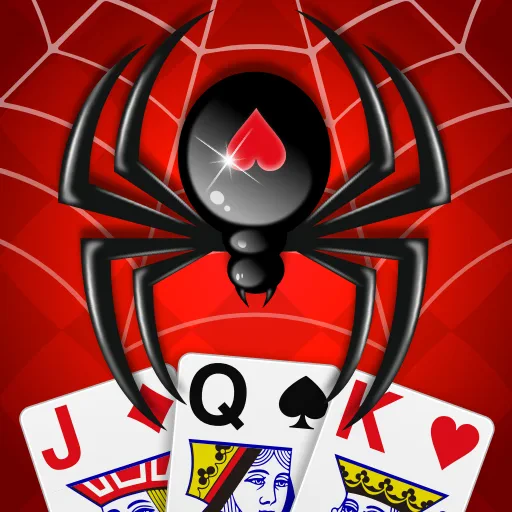 |
|
| Rating: 4.9 | Downloads: 1,000,000+ |
| Category: Card | Offer by: Guru Puzzle Game |
Spider Solitaire Classic Games is a beloved digital adaptation of the classic card game, falling squarely within the Solitaire genre. Players build sequences of cards by suit, arranging them from King to Ace on an open tableau. The game’s appeal lies in its challenging nature, requiring careful planning, strategic card sequencing, and the constant thrill of clearing a difficult layout.
The digital experience of Spider Solitaire Classic Games often boasts clean, intuitive visuals with smooth animations, enhancing the focus needed for strategic play. While typically offering a pure single-player challenge with multiple difficulty levels, its replayability stems from generating new unique spider decks each time. The core attraction remains the satisfying feeling of conquering the complex card sequences.
Gameplay and Features
- [Core Gameplay Loop]: The objective is to build four complete, alternating-color sequences of each suit from King down to Ace. Cards are initially dealt into ten tableau piles (five cards face down and five face up, except in single-suit modes); players must strategically move cards between piles according to rank, moving them onto higher or lower adjacent cards in the same suit. Foundational piles are built down from the King, while open tableau piles can accept any card or sequence of the same color if no lower or higher card of the same suit is available.
- [Visuals or Art Style]: The design often features clean card graphics and a minimalist interface, allowing for focus on the card movements. Animations provide feedback for card moves, and the use of descriptive adjectives like “classic” or “stylized” visuals helps convey the game’s familiar feel while maintaining readability.
- [Modes or Levels]: Typically offered are single-suit (e.g., Spades), multi-suit (e.g., four-suit Spider), and often a “Single Game” mode where multiple hands are played. Unique content includes varying the number of cards dealt per tableau pile, the initial deal structure, and the inclusion of optional features like hints. Some versions might also offer timed challenges or daily deals for extra replayability.
- [Controls or Interface]: Gameplay usually relies on clicking cards and destination piles with a mouse for PC versions or virtual buttons/touch areas for mobile. The interface is designed for intuitive card movement; dragging cards onto valid piles is a common interaction. The ease of control is generally high, focusing on accessibility for players of different skill levels.
- [Customization or Power-ups]: Customization is limited typically, often focusing on themes or card back designs. Some platforms might offer in-app purchases for cosmetic items. Power-ups or special features are usually absent, relying on the inherent strategy of moving cards. Motivation comes from the challenge of clearing layouts, tracking completion statistics, and achieving high scores based on speed or efficiency.
- [Any Special Systems]: Optional features like hints can provide assistance when stuck, and undo functions allow players to correct mistakes. Some digital versions might include achievements or leaderboards, adding gamification elements. The standard single-player experience is the core, focusing solely on the strategic satisfaction of building card sequences.
How to Play
Beginner’s Guide:
- Step 1: Download and install the “Spider Solitaire Classic Games” application from a trusted source. Launch the game and familiarize yourself with the main menu. Select the game mode, typically starting with the easiest variant like Single-Suit Spider.
- Step 2: The cards will be automatically dealt into ten tableau piles. Click on a card in one of the piles. If it’s a Queen, you can move it to the foundation area (usually at the top). Otherwise, look for destination piles according to the rules (same suit, alternating colors, adjacent rank).
- Step 3: Continue moving cards between tableau piles and to the foundation, adhering to the rules. Clear all cards from the tableau piles to win the game. Pay attention to building foundation piles and freeing up cards on the tableau.
Pro Tips:
- Build Foundations Early: Always look to move Kings to the foundation pile immediately, as this frees all face-down cards on that tableau column, potentially revealing powerful starting cards.
- Leverage Column Moves: Sometimes moving cards within a tableau column can allow for moves elsewhere on the board, potentially freeing up cards needed for foundation builds or creating sequences in other piles.
- Manage Face-Down Cards: Use hints if you’re stuck and cannot find an obvious move, but only occasionally, as relying on hints might hinder your own learning of the game’s strategy.
Similar Games
| Game Title | Why It’s Similar |
|---|---|
| Spider Solitaire |
Often considered the direct digital counterpart, featuring essentially the same core rules and gameplay loop as Spider Solitaire Classic Games. Known for its challenging difficulty and focus on complex card sequencing and strategic planning. |
| Klondike Solitaire |
This is the most famous Solitaire variant, sharing the same general game genre. It also involves building sequences on tableau piles, though typically from Ace to King, and relies on similar strategic thinking. It offers a different classic card game challenge. |
| Crazy Eights / Pyramid Solitaire |
While differing in mechanics, these are other popular card games found on many platforms. They appeal to fans of classic card matching games. Though distinct, they provide similar mental stimulation and card manipulation challenges found in “Spider Solitaire Classic Games”. |
Frequently Asked Questions
Q: Are there different difficulty levels in Spider Solitaire Classic Games? What are they based on?
A: Yes, typically, the game offers variations like Single-Suit Spider (dealing ten cards per pile) or Multi-Suit Spider (often four suits, dealing twelve cards per pile). Generally, the Single-Suit mode is considered the easiest as it provides more cards to work with initially, while the Multi-Suit mode presents a greater challenge due to more complex sequences and potentially fewer cards per tableau pile.
Q: What happens when I get stuck with no legal moves in Spider Solitaire Classic Games? Can I restart the game?
A: Getting stuck is common in Spider Solitaire. Many versions include an “Auto-Play” or “Hint” feature that will automatically move cards to make a legal play, often freeing you up and revealing face-down cards. You cannot usually restart a specific hand once stuck without using a hint or auto-play, unless the game has a specific undo or reset function (less common in the core experience). Patience and looking for smaller moves are often required.
Q: How are cards scored in “Spider Solitaire Classic Games”? Is the goal just clearing the board quickly?
A: Scoring can vary by platform, but often points are based on the time taken to clear the board or the number of cards moved. Some versions might offer bonus points for clearing the board very quickly or completing specific challenges. The primary goal, regardless of scoring, is to successfully clear all cards from the tableau by building foundation sequences, which requires skill and careful planning.
Q: Is “Spider Solitaire Classic Games” available for free on mobile and PC platforms?
A: Yes, “Spider Solitaire Classic Games” is widely available across multiple platforms. You can typically find it for free on app stores like the Apple App Store and Google Play Store for mobile devices, and on digital distribution platforms or as a built-in game on many PC operating systems. While often free to play, some versions might include in-app purchases for cosmetics or ad removal.
Q: How do I move multiple cards at once in “Spider Solitaire Classic Games”?
A: To move a sequence of two or more cards, they must form a valid decreasing or increasing sequence of consecutive ranks within the same suit. Select the top card of this stack by clicking on it. If the move is legal (e.g., placing a sequence from King down to Jack onto a Queen), the entire stack will be moved. This allows for efficient clearing of the tableau piles and freeing up space.
Screenshots
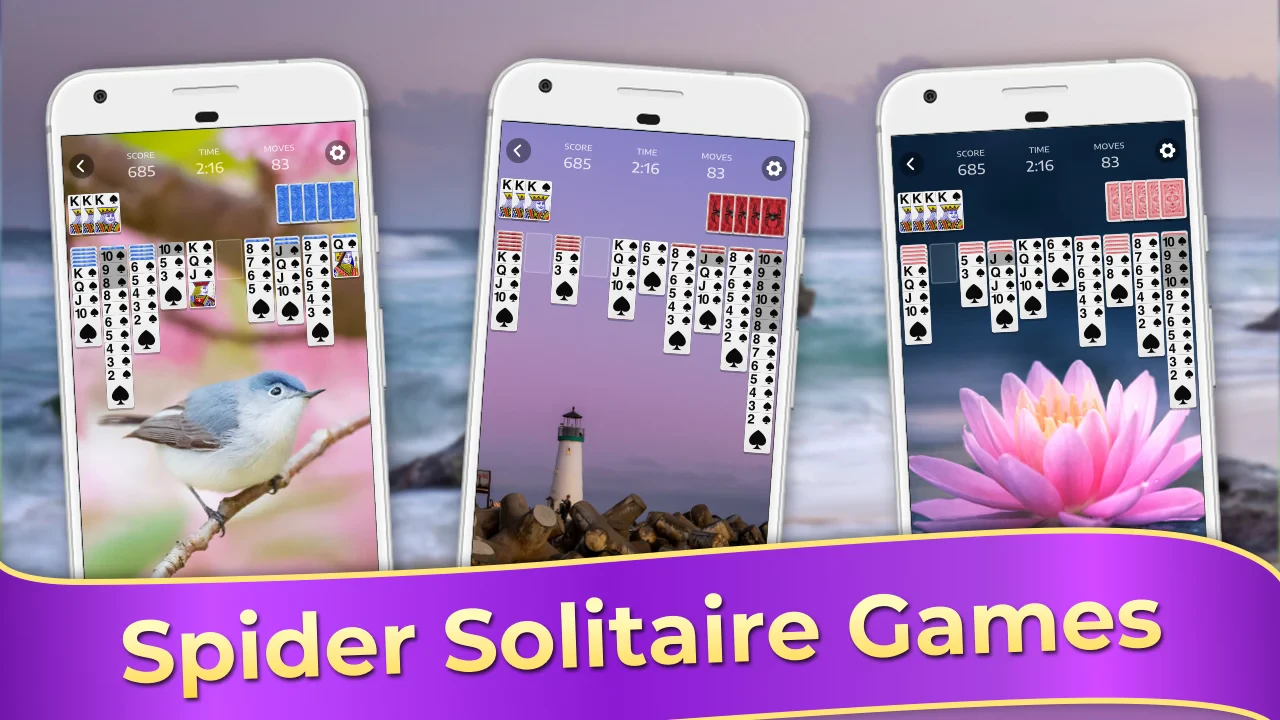 |
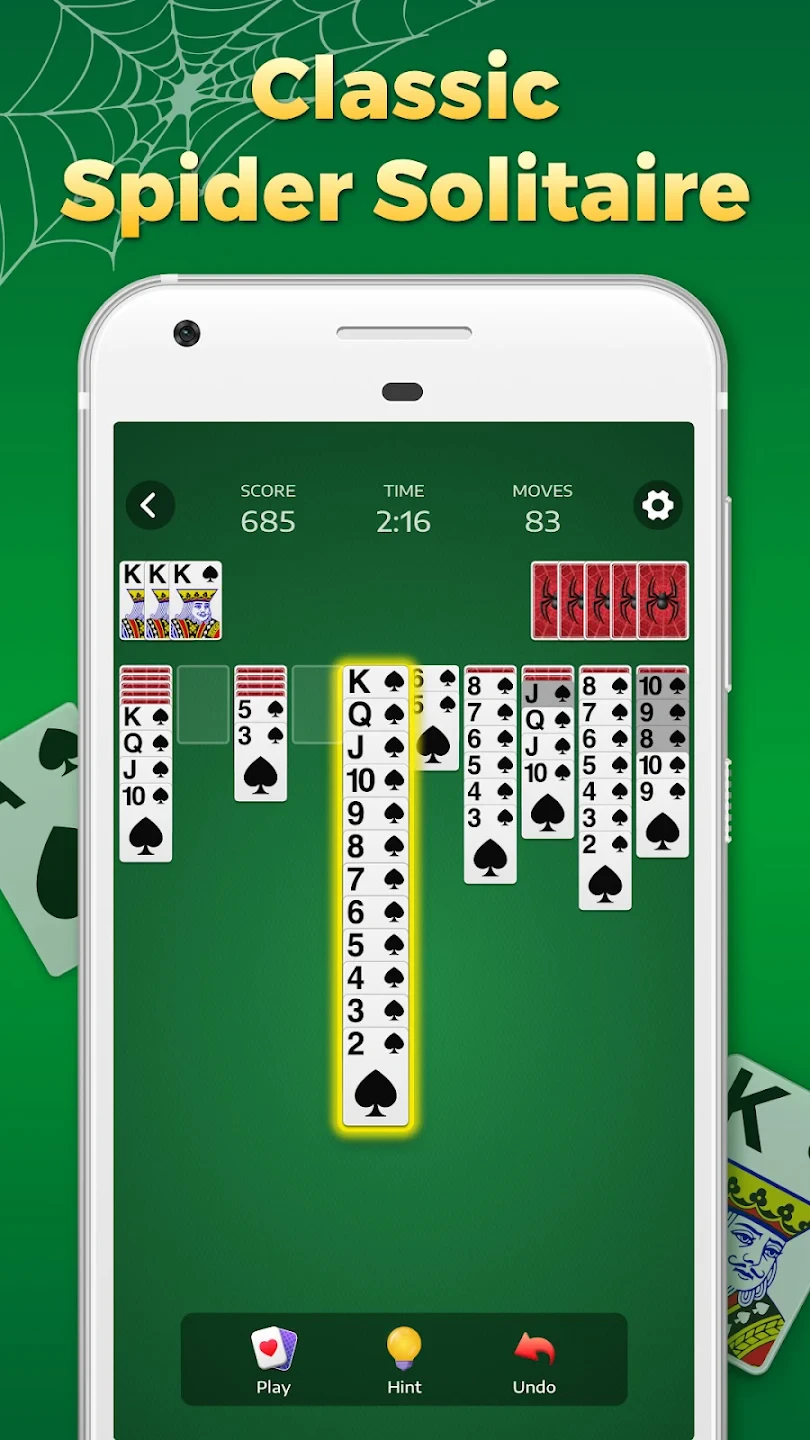 |
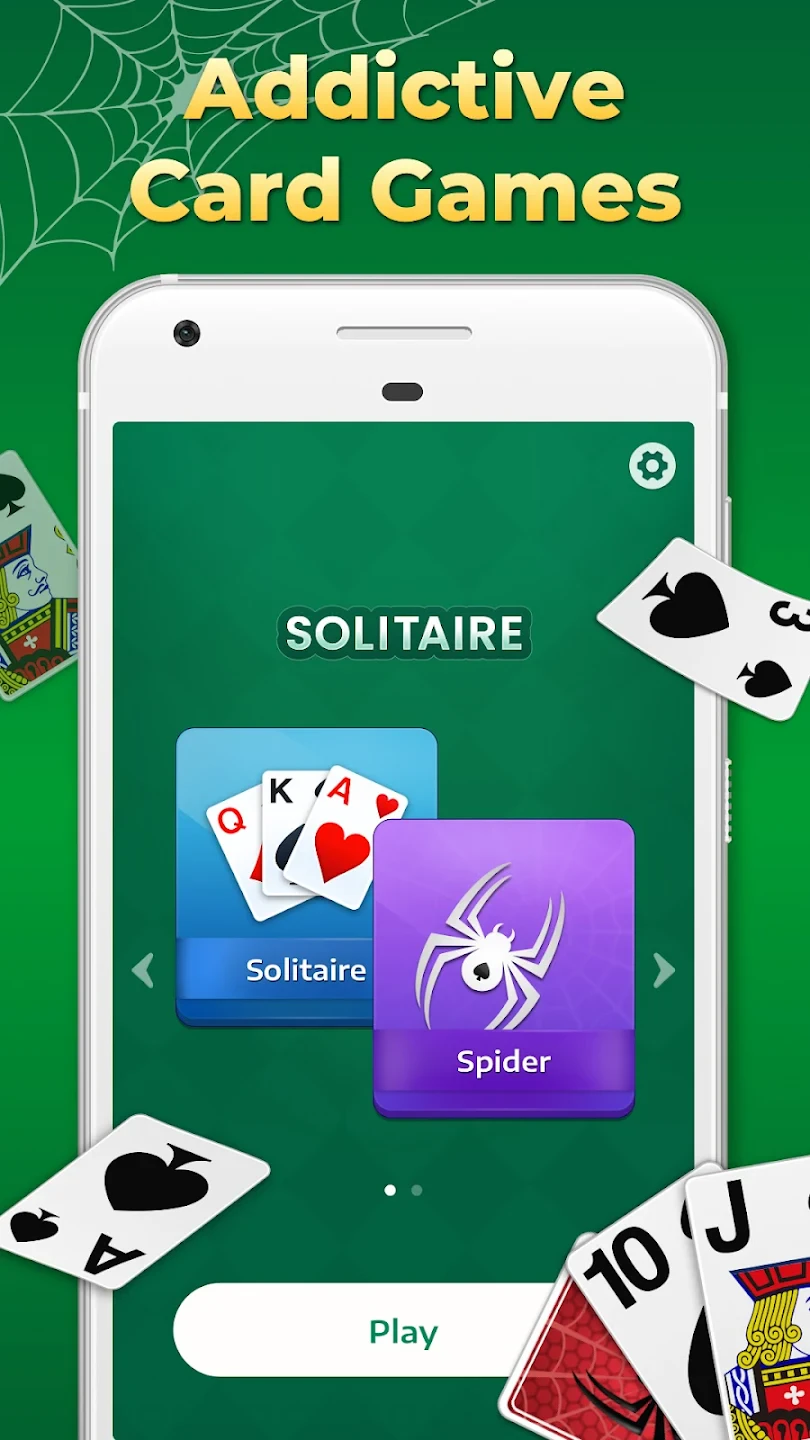 |
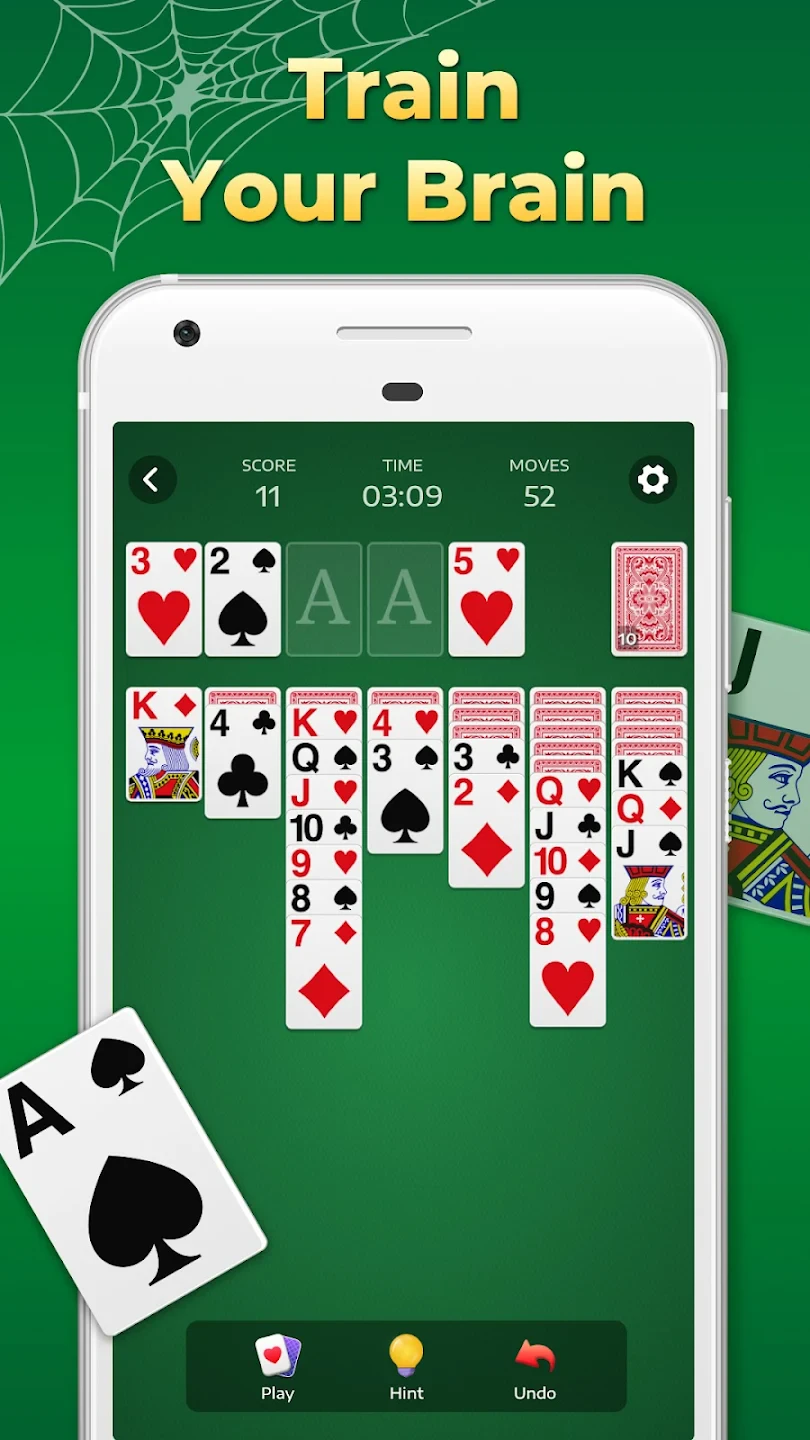 |
